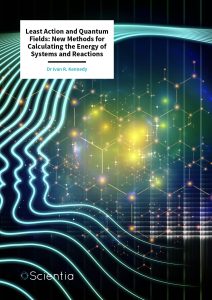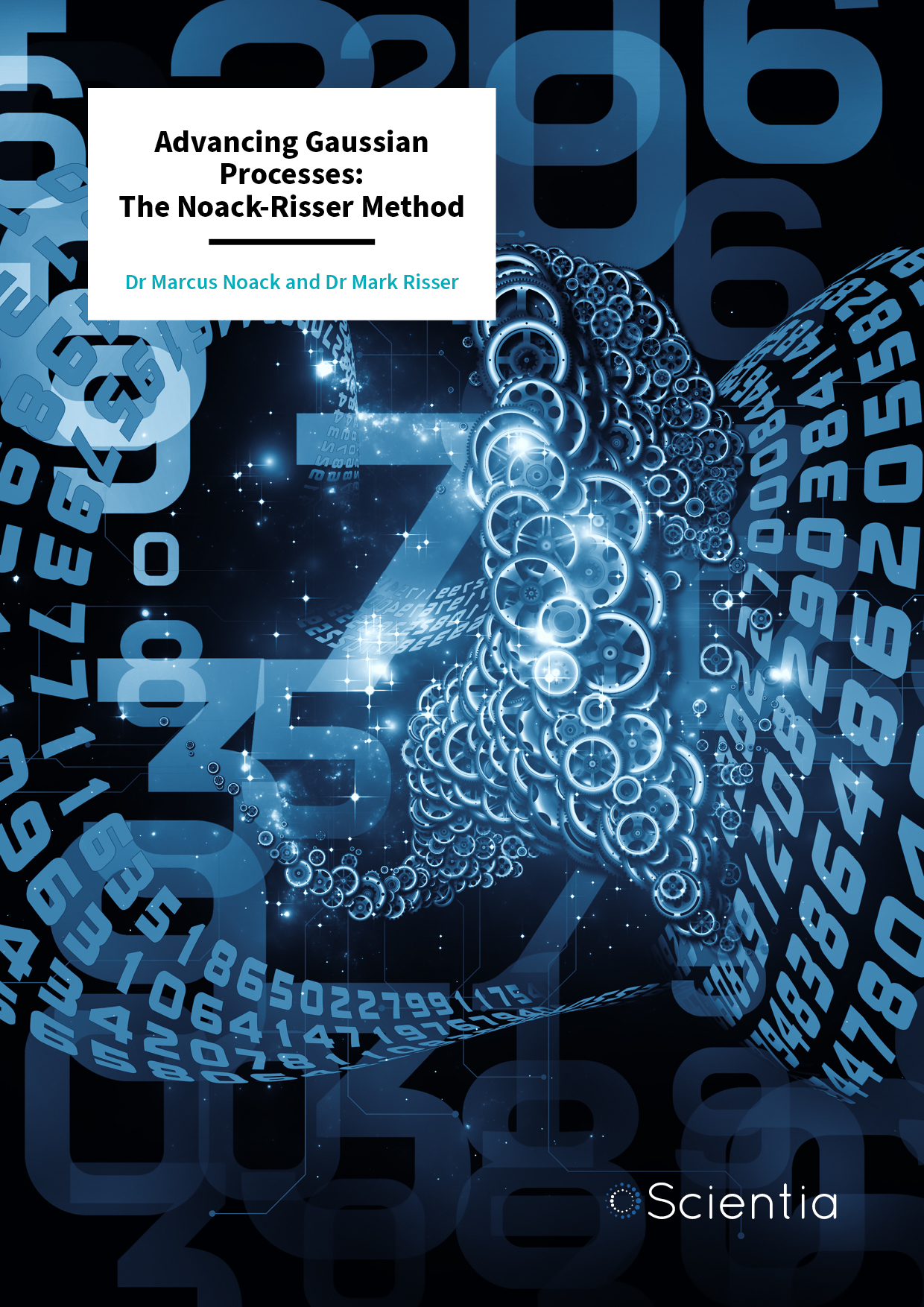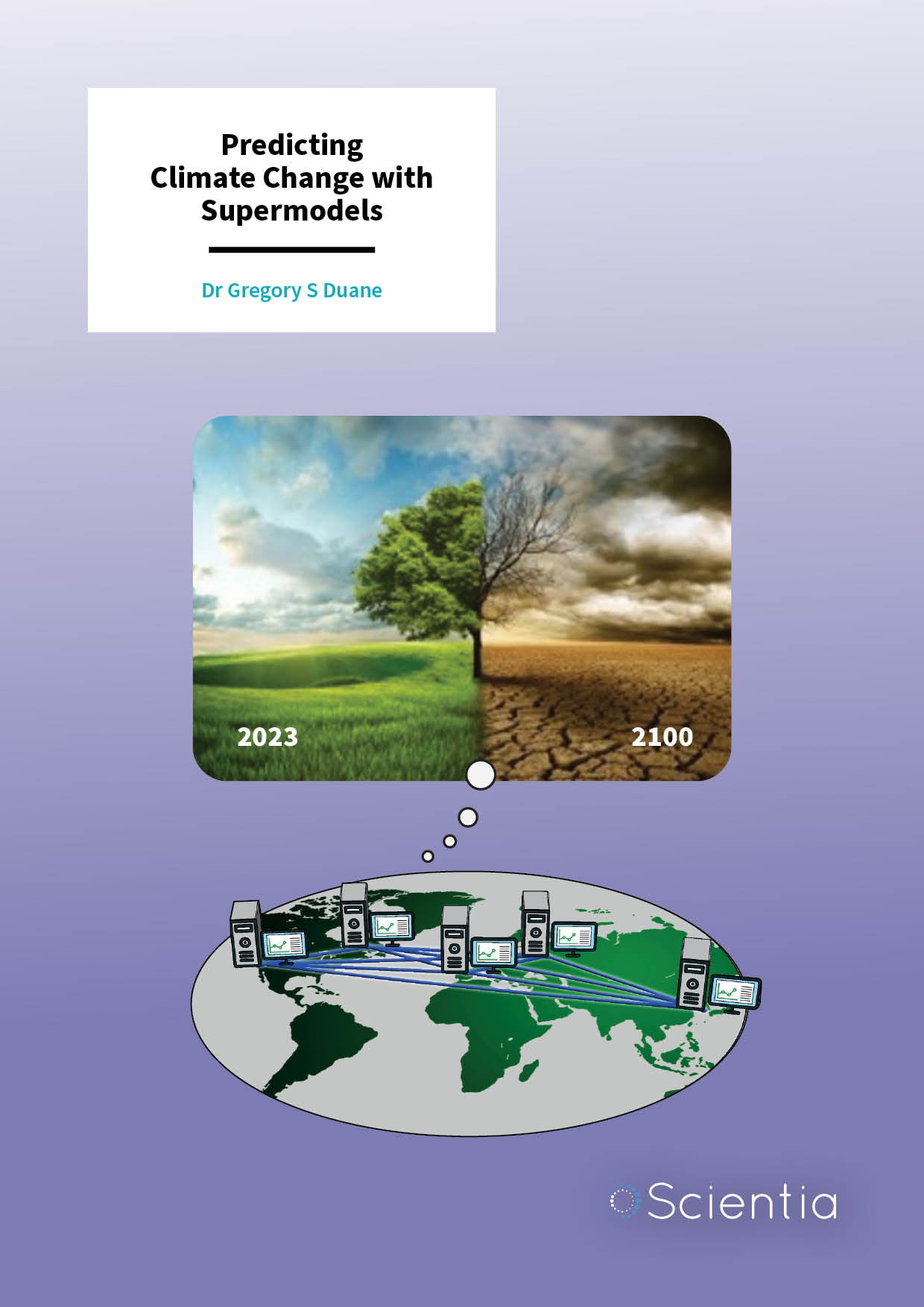Dr Ivan Kennedy | Least Action and Quantum Fields: New Methods for Calculating the Energy of Systems and Reactions
The Principle of Least Action is a well-known tool for mathematicians and theoretical physicists. Simply put, the Principle of Least action states that, for a system to progress from one state to another, the variation in the average kinetic energy of the system minus the average potential energy of the system will be as little as possible. Dr Ivan Kennedy from the University of Sydney has found that the application of this important theorem, combined with the idea of a pervasive quantum field, to processes such as chemical reactions, atmospheric phenomena, and stellar structure, yields some unexpected but exciting results.
Heat Engines and the Atmosphere
The Law of Conservation of Energy states that energy cannot be created or destroyed – only converted into different states. However, when the total thermal energy required to bring atmospheric molecules to ambient temperature from zero Kelvin was calculated by Dr Ivan Kennedy of the University of Sydney and his colleagues, they were surprised to find that the total heat energy required was several times the amount of kinetic or potential energy of particulate matter contained within the atmosphere. This immediately prompted the question of where the energy had gone.
To help answer this, Dr Kennedy returned to the work of the French physicist Sadi Carnot (1796–1832) – the ‘father of thermodynamics’. Carnot’s most famous contribution to physics is the idea of the Carnot heat engine, which is often used to help describe the Second Law of Thermodynamics. Developed by Carnot in 1824, this thermodynamic engine consists of two heat reservoirs of different temperatures with an output of work while transferring heat to the environment. In Carnot’s engine, the transfer between the reservoirs is perfectly reversible, and there is no gain of disorder within the system – in other words, the entropy doesn’t change. To reverse the engine, heat can be moved from the cold to the hot reservoir using an external source (such as a heat pump), and as the temperature moves from hot to cold, the system applies work to the environment.
Carnot used two terms for heat in his engine cycle: the ‘chaleur’ and the ‘calorique’. The chaleur of his engine is the amount of heat from fire put into the engine as high temperature change in calorique, and the change in calorique at low temperature is the heat that can be extracted from it at the end of the cycle. The maximum work of the system is, therefore, chaleur-in minus calorique-out: a change in calorique now known as decreased Gibbs Free Energy. But if this is an ideal thermodynamic system with perfect energy transfers, where has this difference between the two values come from?
Dr Kennedy has developed a theory that this heat energy or calorique has not disappeared but is contained within a ‘Gibbs quantum field’ which continuously performs reversible work on the material particles of the system. According to Dr Kennedy, this quantum field exchanges energy between constituent particles of the system by means of virtual particles carrying individual quanta of energy. The impulsive exchanges in this field can explain the erratic movement of particles in Einstein’s theory of Brownian Motion. By combining the idea of this pervasive energy field and the Principle of Least Action for particles, Dr Kennedy and his colleagues are showing that new insights can be gained into a multitude of applications, from atmospheric phenomena to chemical reactions.

Credit: Ivan Kennedy
Explaining Cyclones and Anticyclones
If the missing energy is indeed contained in a quantum field, what exactly are its effects in the atmosphere? Dr Kennedy explains that the motion of the molecules that make up the system is mainly due to the exchanges with the Gibbs field quanta. When a molecule absorbs or scatters one of these packets of energy, it is boosted along in the direction the quantum was moving and quickly emits this packet, giving the molecule another boost in the opposite direction to the direction of emission. This impulsive motion is tiny and random but, on balance, is the same for each kind of molecule in causing least action, ensuring the same torque or rate of action is experienced as temperature for every chemical species (identical molecular entities) when at equilibrium.
By scaling up his calculation, Dr Kennedy found that using the Principle of Least Action and the Gibbs quantum field also nicely fitted with data on larger radial or vortical motions of air molecules within the atmosphere, particularly cyclones and anticyclones.
Dr Kennedy considers the whole atmosphere as a large Carnot heat engine, with hot and cold areas of the atmosphere providing reversible heat reservoirs that may either heat or cool the surface. As with Carnot’s heat engine, external energy is needed to ‘fuel’ the cyclone. This is provided by sunlight on warm oceanic water that transfers heat to the air column above it in water vapour; on cooling, this condenses, emitting radiant heat from near the centre or eyewall of the cyclone, powering its Coriolis motion with quanta. When the atmospheric heat engine does work on the environment, this is felt as the high winds of the cyclone, also heating the land surface by turbulent friction. Dr Kennedy’s programme presents a new way to calculate the energy contained within the vortical column of hot air, taking into account the reservoir of energy contained in the Gibbs quantum field.
With this novel approach, Dr Kennedy provides a better understanding of how the destructive power of tropical cyclones is generated from oceanic heat, and shows how climate change might lead to more dangerous weather systems. And from a green energy perspective, Dr Kennedy’s calculations of the energy contained within the atmosphere can help calculate estimates of how much power a wind farm can produce.
Application to Chemical Reactions
One of the applications Dr Kennedy is most excited about is the application of the Principle of Least Action and the Gibbs quantum field to chemical reactions. The basis of this work rests on Clausius’s Virial Theorem, which relates the kinetic energy of a system of particles to its potential energy and the system temperature. By using action mechanics with spherical coordinates, Dr Kennedy can express the entropy (disorder) of ideal gases at each temperature as the maximum kinetic or pressure energy contained within the system plus the energy as quanta required to sustain the relative translational, rotational, and vibrational action of all the particles contained within it.
By expressing the entropy of the system in this way, he can easily use known properties of the particles contained within the system, such as the weight, bond length (in the case of molecules), and vibrational frequencies, to calculate reaction rates of chemicals and the position of equilibrium between reactants.
This is a potentially very powerful set of tools, and to make sure that the mathematics was correct, Dr Kennedy applied it to reactions involving the simplest of atoms – hydrogen. This is a good way of checking the mathematics, but in addition, a better understanding of reactions involving hydrogen is critical if we are to properly harness new hydrogen fuel cells. For a chemical reaction to occur, there must be enough field energy provided to form/break the bonds between the atoms of molecules. Even if a reaction overall releases energy by breaking and rejoining bonds, there still needs to be an initial input of energy to cause that breakage to occur.
As part of a test of his programme, Dr Kennedy used it to calculate the absolute values of the Gibbs energy at the temperature found on the surface of the sun. As the sun is primarily formed of hydrogen, he calculated the necessary energies that the quantum field would need to provide to maintain this temperature – around 6,000 degrees! Dr Kennedy calculated the energy contained in each degree of freedom. According to the Principle of Least Action, the less complex hydrogen atoms would be the primary particle found in this layer, and the sheer temperature would require huge quantum field energies, ensuring that the hydrogen molecules would be broken apart. He calculated that the difference between the translational Gibbs field energies between the hydrogen molecules and atoms was very similar to the energy of the primary wavelength of light emitted by the sun. This suggests that the sunlight produced by the sun may be the result of the translational Gibbs field quanta, escaping as hydrogen atoms recombine to form hydrogen molecules as they cool by moving further above the surface of the sun.
Part of what makes this result so intriguing is that it neatly shows that the Principle of Least Action nicely defines both temperature and the second law of thermodynamics. Dr Kennedy explains that ‘By lowering the concentration of H2 [molecules], the amount of heat needed to allow the sun to radiate mainly from its H atoms alone is reduced to a minimum, and the excess heat needed by a higher concentration of H2 can be radiated to colder space, maximising the entropy, but minimising it locally’.
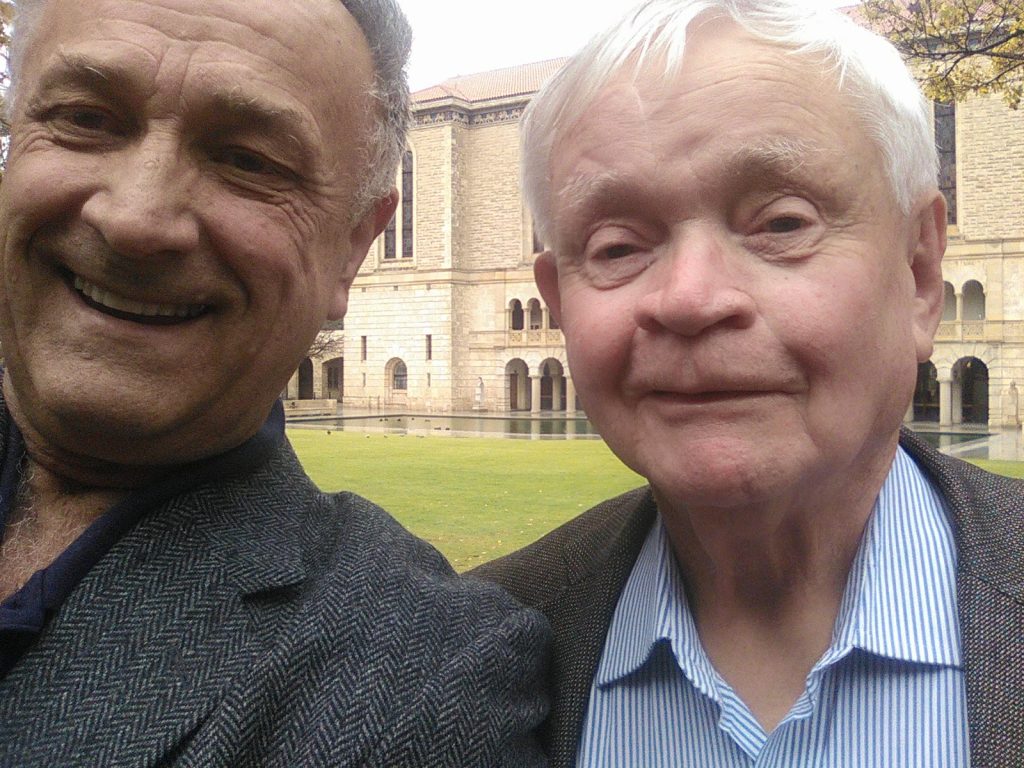
Migdat seeking wisdom near Winthrop Hall at the University of Western Australia, Ivan’s alma mater in 2019. Credit: Migdat Hodzic
An Exciting Future: Moving From Theory to Experimentation
Dr Kennedy’s group work with the Principle of Least Action and the Gibbs quantum field offers huge potential for providing new insights into atmospheric science and chemical reactions. Further applications, such as more complex reactions involving solid and enzymic catalysts, are potential next steps for investigation. The use of the Gibbs quantum field also presents intriguing ideas about the control of reaction rates using radiation sources (such as lasers) to provide intense action fields over the reaction site. So far, the calculations Dr Kennedy has performed are all for gaseous systems, but he believes that they could also be applied to liquid or solid systems. This theoretical work offers experimentally testable predictions. Excitingly, as spectrometers become more advanced, we may even be able to detect the long wavelength radiation emitted from these quantum fields.
SHARE
DOWNLOAD E-BOOK
REFERENCE
https://doi.org/10.33548/SCIENTIA946
MEET THE RESEARCHER
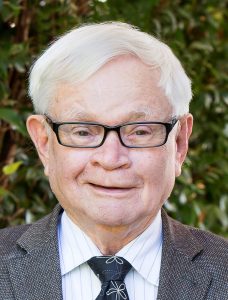
Dr Ivan R. Kennedy
School of Life and Environmental Sciences
University of Sydney
Sydney NSW 2006
Australia
Having mentored 50 research students at the University of Sydney studying diverse topics in nitrogen fixation, biofertilisers for crops, and risk management of pesticides, Ivan Kennedy AM FRACI (PhD, Professor Emeritus in Agricultural and Environmental Chemistry) now works almost solo. His scientific odyssey grew from roaming bush and wheatlands to a PhD in 1965 at the University of Western Australia, sabbaticals in Leicester, Purdue as a Fulbright Fellow, Nice, Leiden, Oxford and Visiting Professorships at the Institut Pasteur in 1992 and in Tianjin, China in 2012. A DSc(Agric) award in 1992 on the acidification of ecosystems was interspersed with 30 years spent in the lab and field in China, Vietnam, Indonesia and Sri Lanka. The Principle of Least Action emerged at a satellite conference traversing the Nullarbor on the Indian-Pacific in 1983, regarding the inaction of acetylcholine receptors in the neurological disorder myasthenia gravis.
CONTACT
E: ivan.kennedy@sydney.edu.au
http://www.ackle.au/
KEY COLLABORATOR
Dr Migdat Hodzic, Faculty of Information Technologies, University Dzemal Bijedic in Mostar, Bosnia and Herzegovina
A chance meeting with Migdat Hodzic (an expert in applied mathematics, control theory, Kalman filtering and artificial intelligence) at a conference in Vienna in 2015 led to him becoming deeply involved in the research programme.
OTHER COLLABORATORS
Dr Angus Neill Crossan, Quick Test Technologies, Institute of Agriculture, University of Sydney, NSW 2006, Australia
Associate Professor Michael Rose, Faculty of Science and Engineering, Southern Cross University, Lismore NSW 2480 Australia
FURTHER READING
IR Kennedy, M Hodzic, AN Crossan, et al., Estimating Maximum Power from Wind Turbines with a Simple Newtonian Approach, Archives of Advanced Engineering Science, 2023. DOI: https://doi.org/10.47852/bonviewAAES32021330
IR Kennedy, M Hodzic, Applying the Action Principle of Classical Mechanics to the Thermodynamics of the Troposphere, Applied Mechanics, 2023, 4, 729–751. DOI: https://doi.org/10.3390/applmech4020037
IR Kennedy, M Hodzic, Partitioning Entropy with Action Mechanics: Predicting Chemical Reaction Rates and Gaseous Equilibria of Reactions of Hydrogen from Molecular Properties, Entropy, 2021, 23, 1056. DOI: https://doi.org/10.3390/e23081056
REPUBLISH OUR ARTICLES
We encourage all formats of sharing and republishing of our articles. Whether you want to host on your website, publication or blog, we welcome this. Find out more
Creative Commons Licence (CC BY 4.0)
This work is licensed under a Creative Commons Attribution 4.0 International License. 
What does this mean?
Share: You can copy and redistribute the material in any medium or format
Adapt: You can change, and build upon the material for any purpose, even commercially.
Credit: You must give appropriate credit, provide a link to the license, and indicate if changes were made.
SUBSCRIBE NOW
Follow Us
MORE ARTICLES YOU MAY LIKE
Dr Olalla Castro-Alvaredo | Measuring Entanglement: Symmetry-Resolved Entropy
Dr Olalla Castro-Alvaredo of the City University of London (UK) and her collaborators are advancing our understanding of an important phenomenon of quantum mechanical systems known as entanglement and, especially, its mathematical measures. Symmetry-resolved entanglement entropy is one such measure. Their study focuses on special quantum states which are excited with respect to a ground state. The research shows how the entanglement amongst quantum particles can be measured and assesses the contribution to the entanglement of quasiparticle excitations, particularly in the presence of additional symmetries.
Dr Tsun-Kong Sham – Dr Jiatang Chen – Dr Zou Finfrock – Dr Zhiqiang Wang | X-Rays Shine Light on Fuel Cell Catalysts
Understanding the electronic behaviour of fuel cell catalysts can be difficult using standard experimental techniques, although this knowledge is critical to their fine-tuning and optimisation. Dr Jiatang Chen at the University of Western Ontario works with colleagues to use the cutting-edge valence-to-core X-ray emission spectroscopy method to determine the precise electronic effects of altering the amounts of platinum and nickel in platinum-nickel catalysts used in fuel cells. Their research demonstrates the potential application of this technique to analysing battery materials, catalysts, and even cancer drug molecules.
Dr Marcus Noack and Dr Mark Risser | Advancing Gaussian Processes: The Noack-Risser Method
Dr Marcus Noack and Dr Mark Risser, researchers at Lawrence Berkeley National Laboratory, have recently proposed a significant advancement in the area of machine learning and data science that promises significant computational improvements: the enhancement of exact Gaussian Processes for large datasets, significantly improving data analysis capabilities for samples even beyond 5 million data points.
Dr Gregory Duane | Predicting Climate Change with Supermodels
Our universe is comprised of fascinatingly complex systems. Systems such as the Earth’s climate can, at first glance, seem far too complex and chaotic to predict accurately. Dr Gregory Duane and his team at the University of Colorado have been developing complex computational models that can learn from past data, providing us with intriguing insights and more accurate predictions about the future.

